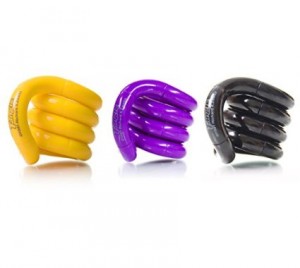“Can you sit still for five minutes!”
“Why are you fidgeting?”
“Can you stop that please, and listen!”
We’ve probably used all these, and more, as the dyspraxia kid fiddles with their pen, rocks back and forth on their chair, taps their foot, or wriggles in their seat. Annoying isn’t it? Well, it is, but there’s a good reason why your DCD child fidgets, and it’s more annoying for them if they have to stop.
The Reason Your Child Fidgets
If they are tapping their feet, then your child is fidgeting to remind themselves of where their foot is. If they are fiddling with their pen, then they’re reminding themselves of where their fingers are.
 Sounds silly to us, but it’s all about body awareness for our kids. If they fidget, then proprioceptive feedback is sent to the brain that tells your child where that body part is. The dyspraxic brain isn’t getting constant feedback like most of us do. If the messages are getting through, then everything is fine and the child is calm and listening.
Sounds silly to us, but it’s all about body awareness for our kids. If they fidget, then proprioceptive feedback is sent to the brain that tells your child where that body part is. The dyspraxic brain isn’t getting constant feedback like most of us do. If the messages are getting through, then everything is fine and the child is calm and listening.
So, the problem with telling them to stop fidgeting is this: the child is then wondering “Where are my feet?” And so they are then not thinking about what you’re talking to them about at all; they are wondering where their body parts are.
They CAN fidget and listen to you at the same time–in fact, it’s better if they do. They aren’t consciously twitching and rocking, but they are making sure that their brains get the message, while they are trying to concentrate on what you’re saying.
This video illustrates the point very well:
So What Can We Do?
For a dyspraxic child, this fidgeting feedback is conscious (even if they don’t know why they are doing it), but for the rest of us it’s subconscious. So how do we turn this situation around? Use this information to our advantage and try a proprioceptive warm-up!
It’s great if you can find 10 minutes in a morning to do this (yes, I know mornings are hectic), or if you can ask them to do something similar at school. Occupational therapists can give the school a sheet of recommended exercises. It’s also supposed to improve a dyspraxic child’s concentration, and done regularly can help their handwriting skills too. It can also be used at points during the day to refocus the DCD child–sort of like pressing their reset button.
There is a large amount of this kind of thinking in the Speed Up book. In fact each lesson begins with a warm-up.
 Here are some ideas you can try:
Here are some ideas you can try:
- Use a balance cushion or wobble board. See how long your child can balance for, or try doing some throwing and catching at the same time as they try to balance. Get them to use both feet first, and then just balance on one foot if they get better at it.
- Walk around on all fours pretending to be different animals. Good proprioceptive feedback is sent back to the shoulder joints especially–very good for improving handwriting skills.
- Give your child things to carry, or get them to push or pull heavy doors–like the ones in schools or shops. In terms of handwriting, the connection to the shoulder is very important for feedback and stability.
Here are some more ideas that you might like to print out:
Remember, just 10 minutes a day can make a big difference.
Fidget Toys
 Of course, some DCD children fidget more than others, and crave that feedback constantly. It’s perfectly acceptable for your dyspraxic kid to use a fidget toy at home or at school–after all, it is helping them to concentrate, and who wouldn’t that?
Of course, some DCD children fidget more than others, and crave that feedback constantly. It’s perfectly acceptable for your dyspraxic kid to use a fidget toy at home or at school–after all, it is helping them to concentrate, and who wouldn’t that?
So, in addition to regular proprioceptive warm-ups, why not try a fidget toy too. (You can just call them ‘fidgets’ if your child doesn’t like the ‘toy’ label.)
There are many different types of ‘fidget’, and it’s just a question of trying some out to see what suits your child best. Stress balls and tangles are the most common, but they all help to calm and help the child to focus.
Let Them Fidget!
So let your child fidget–it will certainly start to improve their motor skills and concentration. And if a little fidgeting is necessary then at least you now know why your DCD child actually has a need to do it. 🙂
Resources
https://brainhighways.com/
http://physioworks.com.au/treatments-1/proprioception-balance-exercises
http://www.friendshipcircle.org/blog/2011/10/31/fidgets-what-are-they-and-how-can-they-help/

Leave a Reply